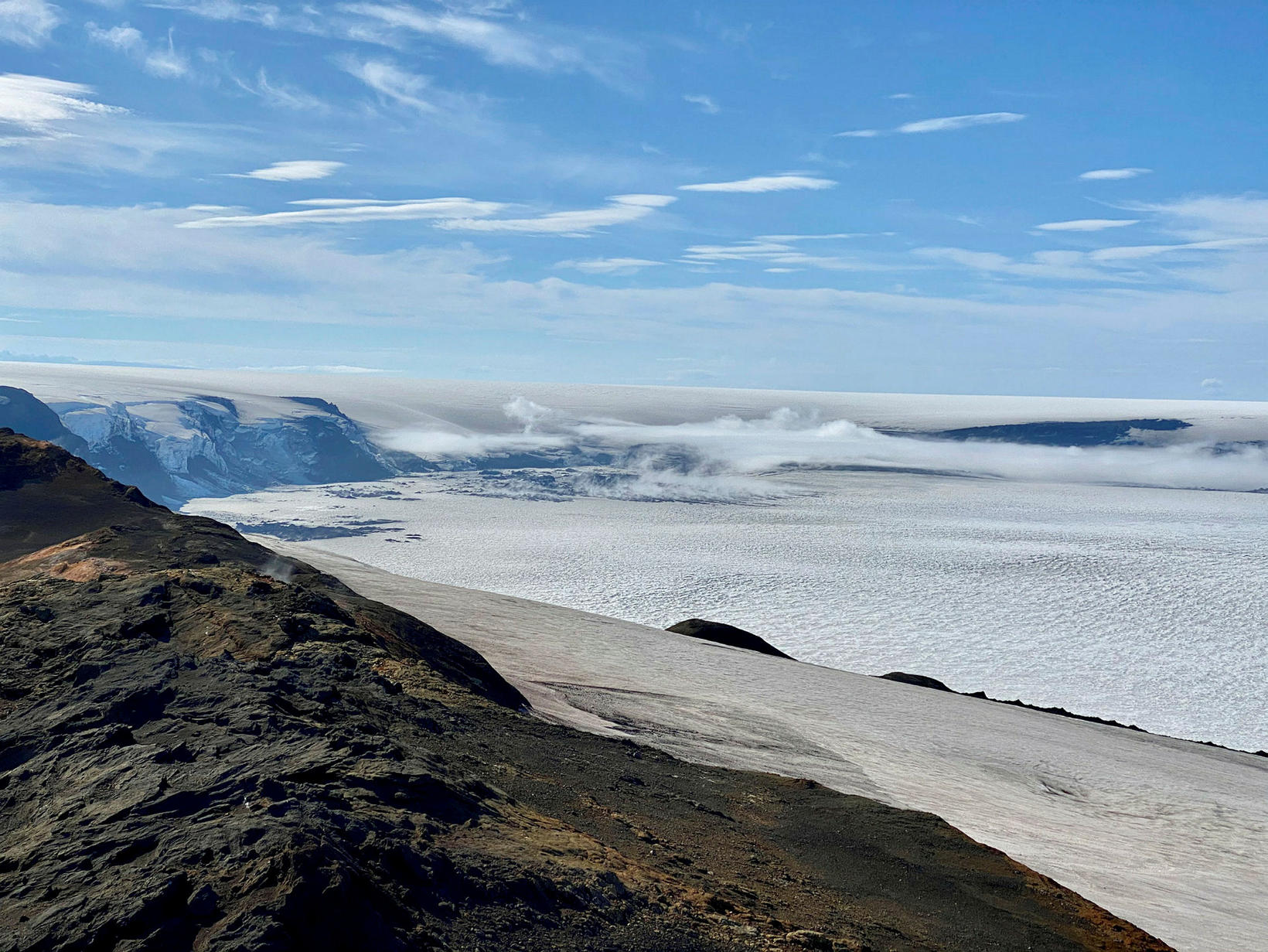Grímsvötn Volcanic System Ready to Erupt
There is every indication that the Grímsvötn volcanic system under the ice cap of Vatnajökull glacier is ready to erupt, according to Benedikt Gunnar Ófeigsson, deformation scientist at the Icelandic Met Office, mbl.is reports. Grímsvötn is the most active volcanic system in Iceland in Holocene time, that is, for the past 11,700 years.
Data obtained through a GPS station on top of the glacier show that the ice cap over Grímsvötn continues to inflate. “The ice cap inflates, mainly because meltwater flows into the lakes,” Benedikt explains.
A second GPS station nearby, on a cliff in Grímsfjall mountain, southeast of Grímsvötn, has registered inflation as well. “That station shows increased inflation, which is due to magma accumulation,” Benedikt states.
Last year, the inflation in Grímsfjall mountain had reached the same level as prior to the last eruption, which occurred in 2011. For that reason, a yellow color code for aviation over the volcanic system was enacted in late September of last year.
“What is different now,” Benedikt states, “compared to the last eruption, is that the surface of the lakes is higher than it has been for a long time. Therefore, once a jökulhlaup [a.k.a. glacial outburst flood] occurs, a very sudden drop in pressure will take place. That can trigger an eruption, according to data available to us about prior Grímsvötn eruptions.”
Benedikt notes that geologist Sigurður Þórarinsson was first to set forth this chain reaction theory in the mid-20th century.
That, too, is what happened during the eruption prior to the most recent one.
“The inflation continues,” Benedikt states, “but at a slower rate than in the beginning. It slows down the longer time has passed since the last eruption. That, too, is one of the indications that the next eruption is approaching.”
Simultaneously, seismic activity has gradually been increasing. “That is another long-term indication we look at, as a potential precursor of an eruption in Grímsvötn. All the data, therefore, suggest that the Grímsvötn volcanic system is ready to erupt, and that it has been for the past year, or even two,” Benedikt concludes.
According to icelandicvolcanoes.is, the eruption frequency in Grímsvötn during the last 1100 years is one eruption per ten years. For a map of the area and more information about Grímsvötn, see here .





/frimg/1/38/77/1387784.jpg)



